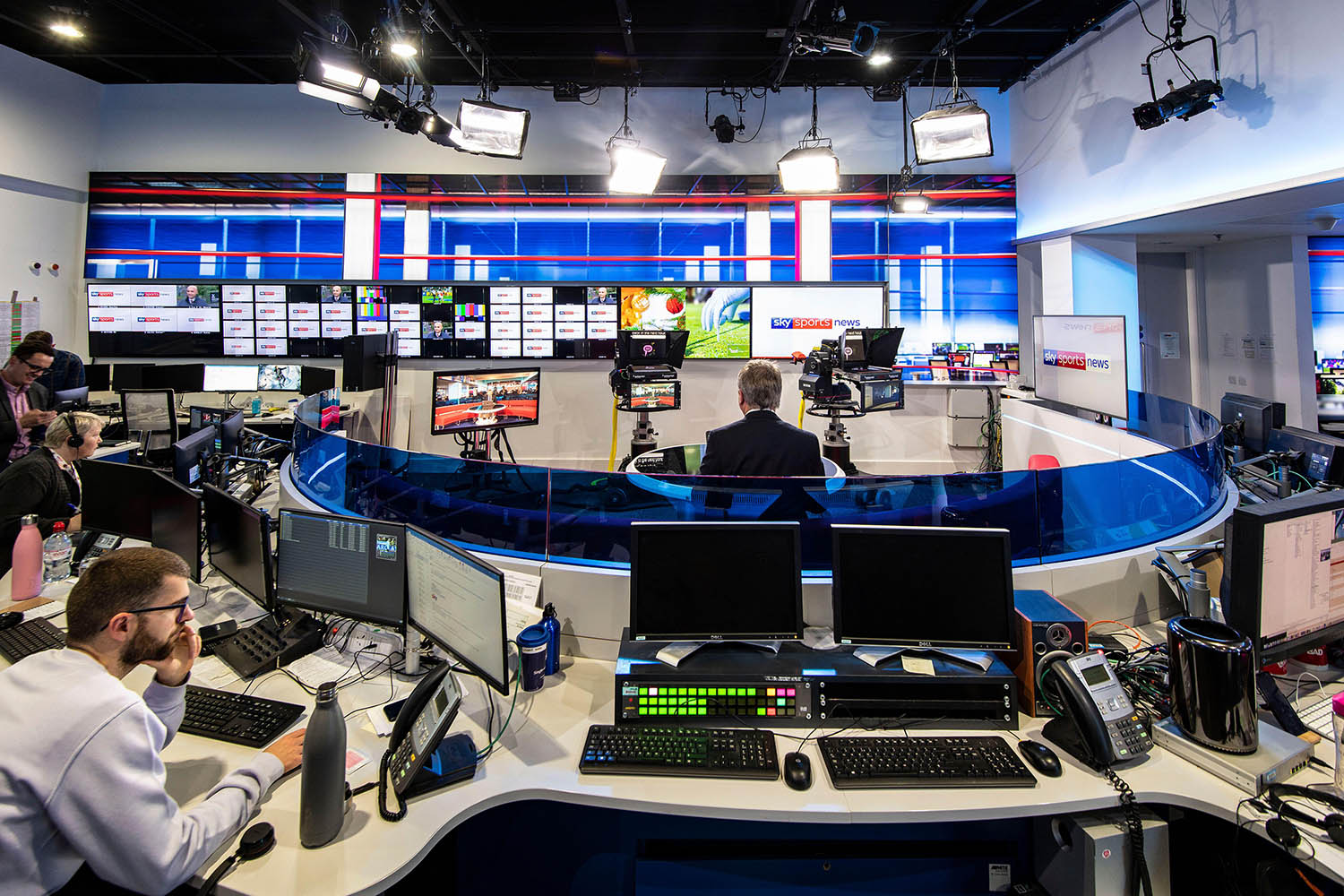The platforms are new, and the delivery can – at times – resemble avant garde performance art, but the look is instantly familiar. In recent years, a thousand football channels have bloomed on streaming services like YouTube and Twitch, hours and hours of ever-more polished content produced by fans, for fans.
This ecosystem is often presented as the cutting edge of sports content. The leading lights of the genre have become, at least to a particular demographic, stars in their own right: Mark Goldbridge, Robbie Lyle, Rory Jennings. Some have brand deals. Most have agents. They have come to be symbols of the declining relevance of the mainstream media, harbingers of where the industry is going.
And yet the visual language of much of their prodigious output is surprisingly traditional. Often they deploy what is known as an L-Frame: a graphic block at the bottom of their screen, another to the right or the left, an occasional flashing chyron alerting viewers to some urgent breaking news development. The future of football broadcasting looks an awful lot like Sky Sports News.
It is easy to dismiss Sky Sports News as vaguely passé, a relic of a world before social media and TikTok and AFTV. It is a channel that is watched largely in gyms and pubs and football club training grounds, often with the sound off; a network that only reliably intrudes on the broader consciousness twice a year, when transfer deadline day rolls around.
Its impact, though, is everywhere; it has filtered into so much of football culture that it is easy to lose sight of it. It is more than the formatting that accompanies Goldbridge’s latest outburst at Manchester United’s incompetence.
With its yellow chyrons and reporters stationed outside darkened training grounds, Sky Sports News played a pivotal role in turning the transfer window into such an integral part of football’s calendar; its coverage of deadline day in 2008, the day that Robinho signed for Manchester City and its cameras captured a silhouette of Dimitar Berbatov inside Old Trafford, made what is essentially an administrative exercise compulsive viewing.
It has – or at least had – such power in driving the endless debate that has turned a mere sport into a rolling soap opera that Sir Alex Ferguson, for one, used to blame it when his players were given retrospective bans.
Now, though, a quarter of a century into its existence and 15 years after Sky placed it, counterintuitively, behind a paywall, the channel finds itself in the midst of upheaval. As first reported by The Daily Telegraph, the network offered voluntary redundancy to some of its in-studio presenting talent last month. Though “only a small number of roles” are impacted, as a Sky Sports statement said, a handful of staffers are believed to be negotiating terms.
Executives at the channel are adamant that the move is not a cost-cutting measure instituted at the behest of Sky’s parent company, the American broadcasting giant Comcast. They insist, privately, that it is not a response to just how expensive Premier League rights have become, pointing out that though the network will show more games from England’s top flight from next year, the cost per game has reduced.
Instead, they say, the aim is to create a more “agile” newsroom, one “better equipped to serve audiences across TV, digital and social”. The most immediate impact of that change will be an end to the traditional model of using two anchors for the channel’s tentpole breakfast and evening shows, replaced by what is termed “single head” presenting.
That move might sound minor, but it indicates a more profound shift in the channel’s identity. Sky’s internal data suggests that Sky Sports News’ audience is resilient: its figures increased by 8% in 2023, and it is currently exceeding its targets for this year. There has been notable growth among under-35s, too, even in a broadcast environment in which it is widely accepted that young people do not watch television.
It is still the place that many fans turn when a major story breaks; when it emerged, on Friday night, that Liverpool are closing on a deal with the Germany playmaker Florian Wirtz ahead of what may well be a British record move, for example, executives were expecting to see a surge in viewership.
Internally, though, there is an acceptance that the landscape in which it operates has shifted. Transfer deadline day, for so long Sky Sports News’ great showcase, now plays out – for the truly obsessed and/or extremely online, at least – on social media, where fans wait breathlessly for updates from “insider” journalists like Fabrizio Romano and David Ornstein.
Sky Sports is a potent presence on that battleground, with more than 100 million followers across its various platforms; all of that output, both digital and social, falls under the auspices of Sky Sports News. In a way, its name is slightly misleading: it is, in many ways, as much of a production house as it is a news channel.
Breaking news, of course, is still a valuable asset; virality is in the nature of news. But the channel intends to focus more, too, on promoting the suite of live rights that Sky has acquired: not just the Premier League, but the Women’s Super League, too, as well as extensive coverage from the three divisions of the EFL.
It also intends to draw more on Sky’s roster of on-screen talent, the characters from the Sky Sports extended universe. Jamie Carragher and Gary Neville, in particular, now play an outsize and cross-generational role in football’s broader culture. Both reliably drive considerable amounts of traffic for MailOnline and the Telegraph’s digital operation; Carragher’s work on the American network CBS, and clips from various shows under Neville’s Overlap banner, have increased their profile exponentially.
That, Sky Sports News feels, will be central to its new iteration. It is not just where fans want to consume content – on their phones, rather than on their televisions – that has changed; it is the nature of what appeals, too. Compelling reaction, now, carries just as far as news.
Sky Sports News helped to shape the look and the feel of a thousand YouTube fan channels. But that is a two-way process. The channel that helped to create the world of modern football now finds itself forced to adapt itself to it.
Photograph by Chris Jobs/Alamy

